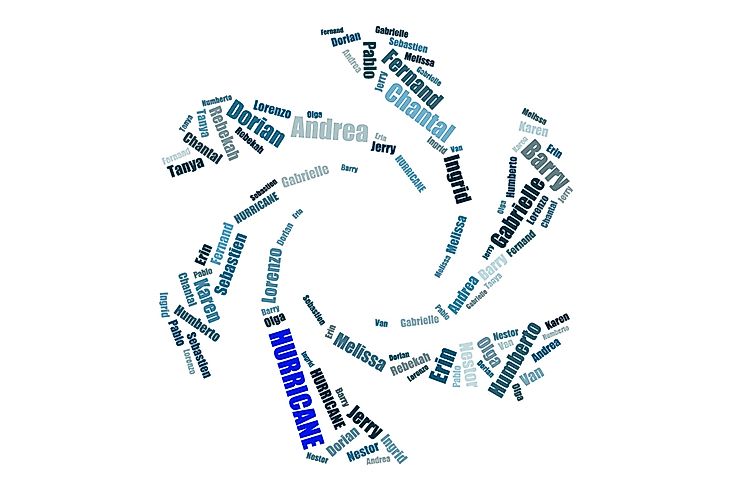How Are Hurricanes Named?

When Americans began naming hurricanes and tropical cyclones, longitudes and latitudes were used to pick the names. This system was found burdensome because committing numbers to memory was not an easy task. This was especially true when the number of occurrences of these storms was too much. Names were adopted to make communication more clear for different stations that needed such information. The use of memorable names has been significant in reducing confusion in cases where cyclones occur in almost the same locations longitudinally.
Origins of Naming Hurricanes
Old records have shown that hurricanes were named after a specific saint's day that occurred. Such names that have been noted by the author Ivan R. Tannehill in his book include: "Hurricane Santa Ana" that struck Puerto Rico on July 26, 1825 and "San Felipe" (the first) and "San Felipe" (the second) that destroyed Puerto Rico on September 13 in 1876 and 1928. The earliest record of people's names being used for tropical storms is credited to Clement Wragge. This meteorologist began using female names by the end of the 19th century. Another notable record of a woman's name being used to name a storm is from the book "Storm" by George R. Stewart which was published in 1941. This exposure aided the spread of such names among Army and Navy stations as they monitored the movement of storms in the Pacific Ocean during World War II. The US used the old phonetic alphabet to name hurricanes until 1953 when they had to adopt another way that was easier to remember. The change was as a result of the introduction of a new phonetic alphabet. Thus, it is accurate to say that the new alphabet paved the way to the use of female names. The female names were used until 1978 when both male and female name were included in the Eastern North Pacific storm lists.
Retiring Hurricane Names
The World Meteorological Organization is in charge of naming hurricanes. They have a list of names for every six years that are used to identify Atlantic hurricanes. The method used means that the list of names is recycled every 7th year. The only exception to the repetition occurred when a hurricane was so catastrophic that the use of the same name would be insensitive. In such a case, during the committee's annual meeting, the name is removed from the list and another name selected to replace it. Before 1979, when the list for six years was introduced, it has been noted that some names were retired without any reason. An example is the 1966 hurricane "Fern" which was replaced for "Frieda". The 6-year list does not explain instances where the 21 named hurricanes occur in the Atlantic in a season. If this happens then the cyclones are named from the Greek Alphabet. The naming system was created by the World Meteorological Organization Tropical Cyclone Programme.











